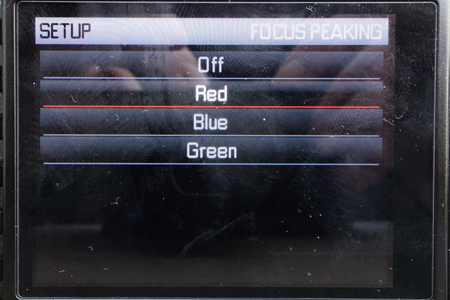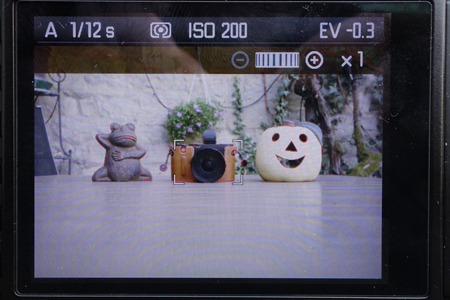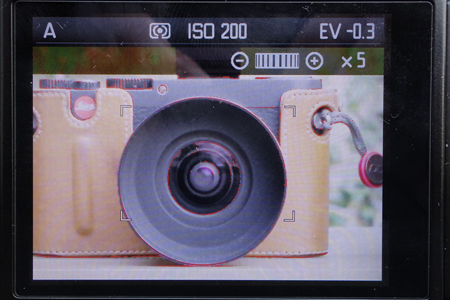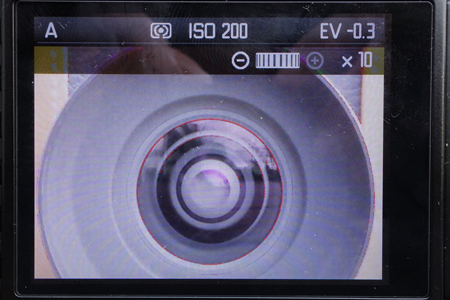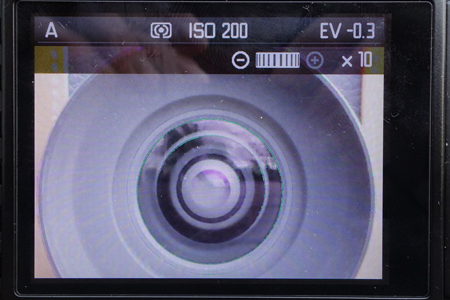Leica X Vario and Leica M (Typ 240): Manual Focus Comparison
Focusing Manually | Electronic Viewfinder and LCD Screen Used in Live View Mode | Focusing Aids: Magnification and Focus Peaking | Conclusions
On this page, I would like to discuss the differences in manual focusing between the Leica X Vario and the Leica M (Typ 240) in live view mode, which in part result from the differences in the focusing aids, which I therefore also compare here.
Note: For details on focusing manually with the Leica M (Typ 240), see page Leica M (Typ 240): Manual Focusing. For not so detailed information on focusing manually with the Leica X Vario, see page Leica X Vario: Manual Focusing.
Focusing Manually
With the Leica X Vario, switching to manual focus is easy: just turn the lens' focus ring from the "AF" position over a slight mechanical resistance to the right.
Manual focusing can be performed using:
- The image displayed by the viewfinder/LCD screen (sharpness of the image, a focus aid is offered by the screen magnification function)
- The distance scale on the focus ring of the lens (see photos below); there is no depth of field (DOF) indicator (see my DOF tables on this site)
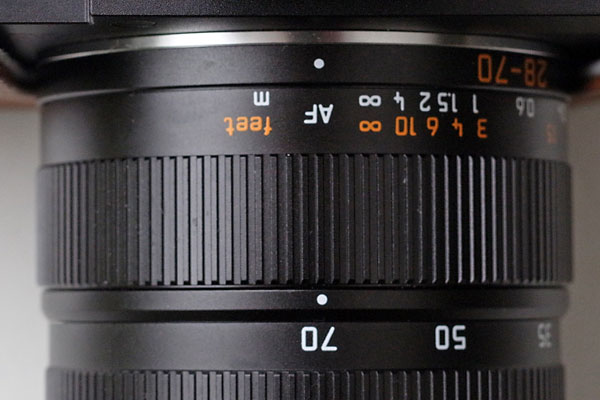 |
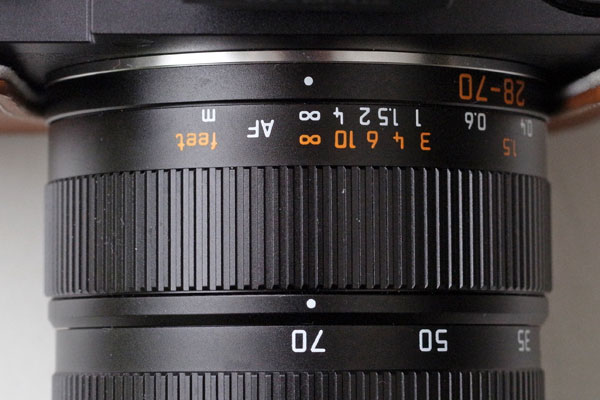 |
|
Focus set to AF |
Focus set to infinity (as an example of manual focus) |
Photos: Focus set to "AF" and infinity as an example of "MF"
The Leica X Vario does not have a dedicated macro mode. Here the tele end is the preferred setting, allowing the lowest distance (30 cm) and the largest magnification. The camera therefore reminds you to change the focal length to 70 mm whenever you want to set a lose distance (which can be annoying at times...).
The Leica M (Typ 240) is a "manual focus-only" camera which supports this in the following ways:
- You turn the focus ring to the desired position if you want to pre-focus using the distance and depth of field scales on the focus ring of the lens* (see photos below)
- You look through the rangefinder and focus using the double image or split image methods.
- You activate live view mode and look through the electronic viewfinder/at the LCD screen** and focus based on the sharpness of the image; focusing can be supported using the screen magnification and focus peaking functions).
*) Please note that it depends on the lens, whether there is
a depth of field scale on the lens (usually, there is one). Most M-mount lenses
do not have a macro mode and typically, the minimum distance is comparatively
large (see page My M-Mount lenses).
**) I rarely use the LCD screen for taking photos
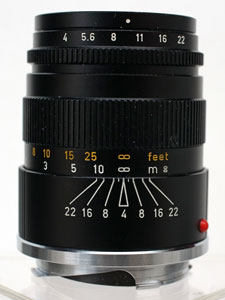 |
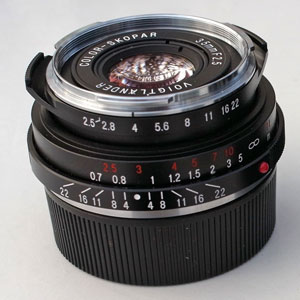 |
Photos: Distance scale on manual M-bayonet lenses - Leitz Elmar-C 90mm f/4 (left) and Voigtländer Color Skopar Pancake II 35mm f/2.5 (right)
For a direct comparison with the Leica X Vario, I discuss only manual focusing on the Leica M (Typ 240) using using live view mode and the electronic viewfinder/LCD screen here.
Electronic Viewfinder and LCD Screen Used in Live View Mode
Both Leica cameras use more or less the same rear LCD screen, at least do both have the same resolution (0.9 MP). And both cameras use the same electronic viewfinder, either the Leica EVF-2 or the Olympus VF-2. In my case, I use the same Olympus VF-2 for both cameras.
All in all, from a technical point of view, with respect to the viewfinders/LCD screens, there is no difference between the two cameras.
Here are two example looks through the electronic viewfinder on both cameras (taken with two different cameras, do not take these photos too seriously):
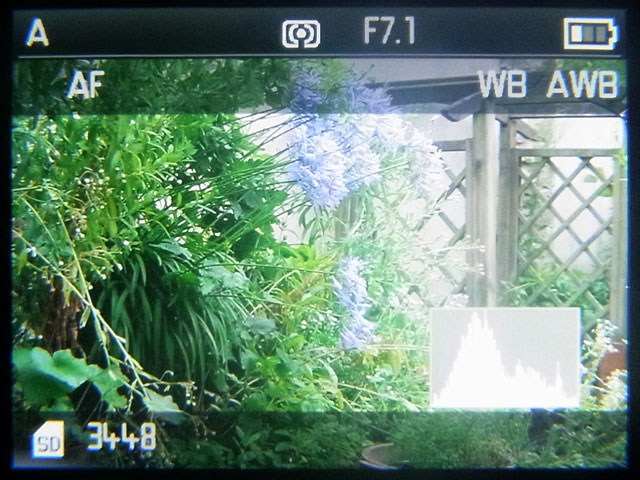 |
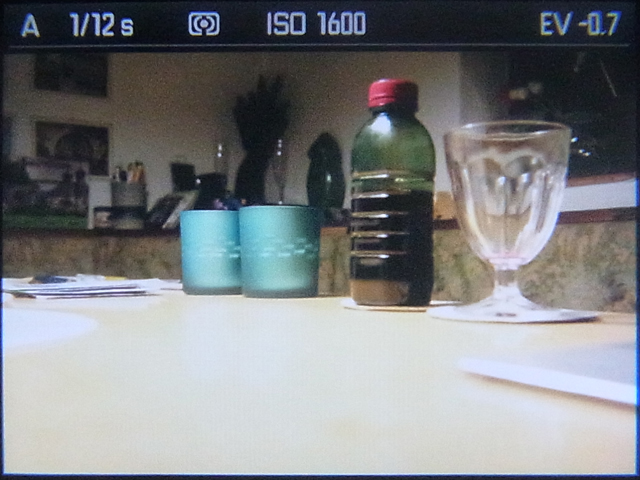 |
Photos: Look through the VF-2 viewfinder on the Leica X Vario (left) and Leica M (Typ 240) (right) - click the photos for larger versions
Focusing Aids: Magnification and Focus Peaking
The Leica X Vario only offers only one focusing aid: the enlargement of a part of the screen. Screen magnification can be turned on and off in the menu (MF Assist).
The magnified section of the image that appears for about 2-3 seconds (5 seconds according to the manual). It comes up whenever the focus ring is turned. It also comes up for the same period of time when you press the DELETE/FOCUS button on the back (left side, second button from top - see photos below). Again, the magnified section disappears after about "nominally" 5 seconds.
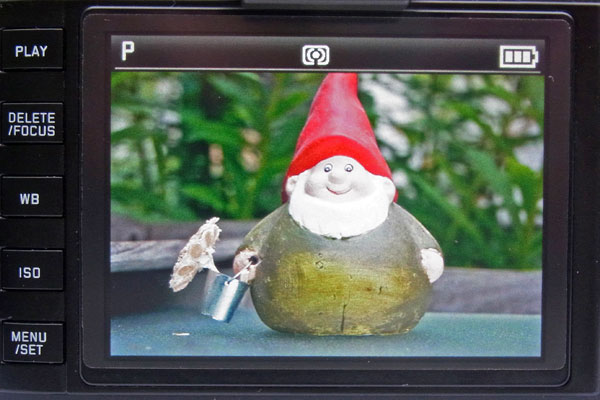 |
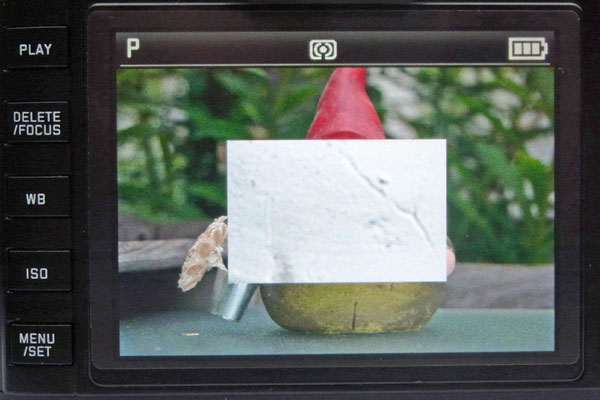 |
|
No magnification |
Section magnification |
Photos: Screen magnification on the Leica X Vario
The enlarged section offers a magnification of about 6 x, but the image quality of the magnified section is poor so that I usually focus manually without using screen magnification. It can be moved around using the direction pad. However, this option makes sense to me only for shots where the camera is on a tripod - I never use it for hand-held shots.
The Leica X Vario does NOT have focus peaking.
The Leica M (Typ 240) has the following focus aids:
- Screen magnification: A section is magnified and covers the whole screen; the magnification can be set to 1 x, 5 x, or 10 x using the thumb wheel. This can be initiated manually by pressing the focus button or automatically by turning the lens's distance ring.
- Focus peaking: This makes contours shimmer in a user selected color (red, blue, green; has to be selected in the menu)
Both aids can be combined, or better, focus peaking can be added to magnification. They stay after you have invoked them and go away when you half-press the shutter release button or press the focus button. In the case of automatic screen magnification, this stays for 5 seconds after you stopped turning the lens's focus ring.
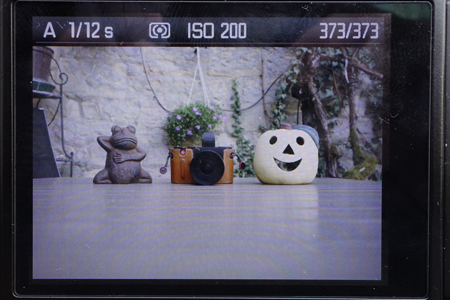 |
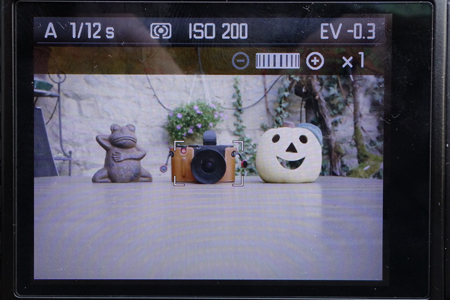 |
|
No magnification
|
Screen magnification 1 x |
|
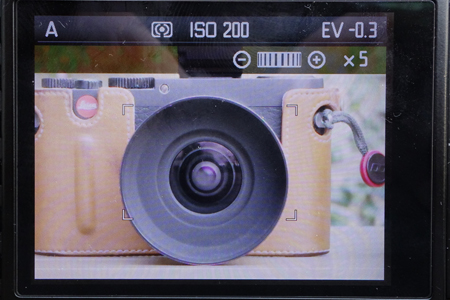 |
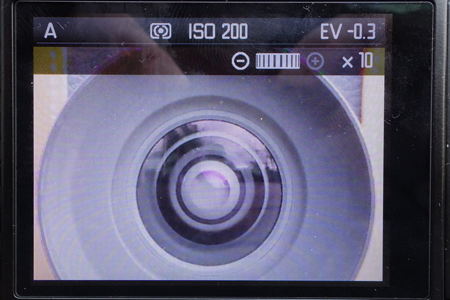 |
|
Screen magnification 5 x |
Screen magnification 10 x |
Photos: Screen magnification on the Leica M (no focus peaking)
Here are sample photos showing focus peaking on the Leica M (Typ 240):
Photos: Focus peaking on the Leica M (Typ 240) can use three different colors (red, blue, green) and added to the screen magnification 1 x, 5 x, and 10 x
Note that the magnified section has a much higher quality when it covers the whole screen compared with the Leica X Vario where it covers the screen only partially - although the photos above may not show this conclusively (this is particularly evident on the Ricoh GXR, which offers both magnification modes).
Conclusions
Focusing manually with the Leica M (Typ 240) is much easier and more joy than with the Leica X Vario. The magnified section can be displayed permanently, so that it does not go away too soon, and the image quality of the magnified section (shown full-screen) is much better on the Leica M (Typ 240). Moreover, the M also adds focus peaking as a bonus... The only thing that annoys me at the moment, is the focus button, which often needs several presses before it reacts... I am unsure whether this is the fault of my sample or of the camera in general. But it seems that I have become better at this, in the meantime...
On the Leica X Vario, the short period of time that the magnified section is displayed is completely insufficient and annoying. The quality of the magnified section is also insufficient. Therefore, I prefer to focus manually without screen magnification on the X Vario. The X Vario also lacks focus peaking.
| 08.03.2016 |
